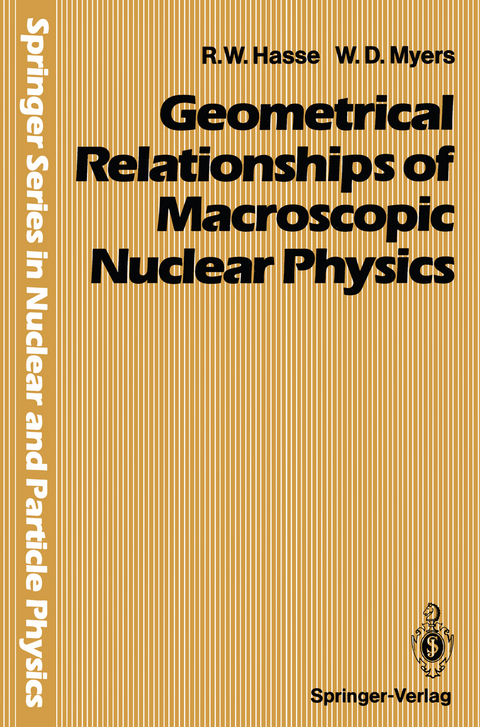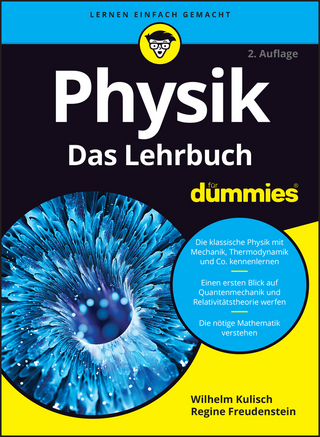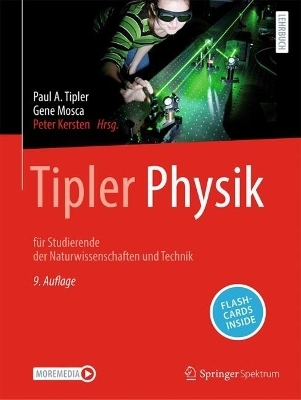
Geometrical Relationships of Macroscopic Nuclear Physics
Springer Berlin (Verlag)
978-3-642-83019-8 (ISBN)
1 Definition and Notation.- 1.1 Introduction.- 1.2 Nuclear Radius Constant.- 1.3 Geometrical Quantities.- 1.4 Surface Energies.- 1.5 Coulomb Energies.- 1.6 Curvature and Redistribution Energies, etc.- 1.7 Deformation Energies.- 1.8 Normal Modes and Dynamics.- 2 Characterization of Leptodermous Distributions.- 2.1 Introduction.- 2.2 The OriginaJ Surface Moments, Gm.- 2.3 The Surficial Moments, ?n.- 2.4 The Surface Shape Coefficients, ?n.- 2.5 Distributions Related by Folding.- 3 Folded Distributions.- 3.1 Definition.- 3.2 Normalization and Radial Moments.- 3.3 Multipole Moments.- 3.4 Moments of Inertia.- 3.5 Coulomb Energy.- 3.6 Specific Examples.- 4 Spllerically Symmetric Distributions.- 4.1 Sharp Sphere of Radius R.- 4.2 Diffuse Surface Distributions.- 5 Spheroidal Deformations.- 5.1 Spheroids.- 5.2 Nilsson Potential.- 6 Small Deformations.- 6.1 Spheroidal Expansion.- 6.2 Harmonic Expansions.- 6.3 Distorted Spheroids.- 6.4 Relations Between Small Shape Parameters.- 6.5 Triaxial Shapes.- 7 Large Deformations.- 7.1 Arbitrary Shapes.- 7.2 Generalized Spheroids.- 7.3 Cassinian Ovaloids.- 7.4 Matched Surfaces of Revolution.- 7.5 y-Family.- 8 Saddle Point Properties.- 8.1 Liquid Drop Barriers.- 8.2 Businaro-Gallone Point.- 8.3 Normal Modes.- 9 Separated Sllapes.- 9.1 Two Spheres.- 9.2 Two Spheroids.- 9.3 Two Distorted Spheres.- 9.4 Three Fragments.- 9.5 n-Spheres.- 10 Exotic Shapes.- 10.1 Toroids.- 10.2 Bubbles.- 11 Medium- and High-Energy Nuclear Collisions.- 11.1 Factorization.- 11.2 Different Approaches.- 11.3 Density Distributions.- Bibliograplly.- Citation Index.
| Erscheint lt. Verlag | 8.12.2011 |
|---|---|
| Reihe/Serie | Springer Series in Nuclear and Particle Physics |
| Zusatzinfo | IX, 141 p. 1 illus. |
| Verlagsort | Berlin |
| Sprache | englisch |
| Maße | 170 x 244 mm |
| Gewicht | 281 g |
| Themenwelt | Naturwissenschaften ► Physik / Astronomie ► Allgemeines / Lexika |
| Naturwissenschaften ► Physik / Astronomie ► Atom- / Kern- / Molekularphysik | |
| Naturwissenschaften ► Physik / Astronomie ► Theoretische Physik | |
| Schlagworte | Fission • nuclear physics • Potential |
| ISBN-10 | 3-642-83019-6 / 3642830196 |
| ISBN-13 | 978-3-642-83019-8 / 9783642830198 |
| Zustand | Neuware |
| Haben Sie eine Frage zum Produkt? |
aus dem Bereich


